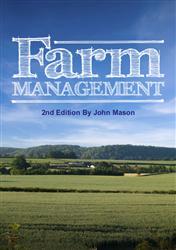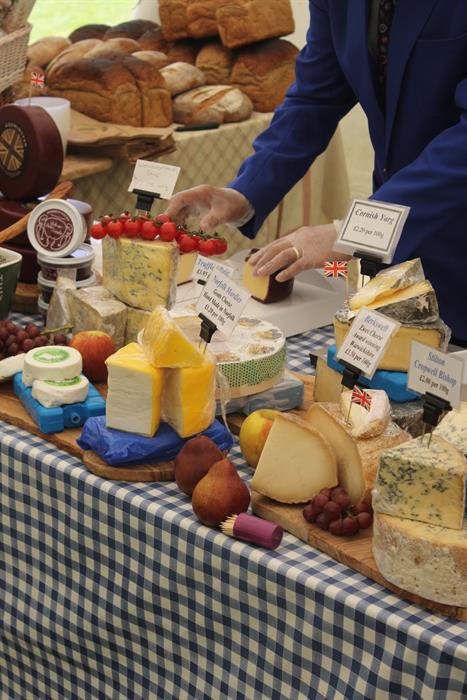Farm Planning
MANAGING THE FARM


The following text is an extract from the book Farm Management by John Mason. To find out more and purchase the eBook, follow the link at the bottom of this page.
To manage a farm well requires careful planning. In most instances, you should plan for years, if not decades in advance. You should plan both the physical development of the farm property, as well as the development of the farm business.
Some of the things which may need to be planned for include:
- Upgrading facilities (e.g. introducing new technology, new procedures, replacing or improving worn out or damaged facilities).
- Expansion of operations.
- Changing direction (e.g. moving from one type of livestock to another, or diversification).
- Major maintenance (of property, buildings or equipment).
- Training staff.
- Holidays.
- Contingencies in case of anything going wrong (e.g. economic downturn, drought, illness).
SHORT TERM OPERATIONS
Sometimes a farm is bought and developed as a short term prospect. A farmer may approach a property from an investment perspective, with a view to improving facilities and business prospects over a relatively short period (e.g. a couple of years), and then selling it for a profit. In such situations, it may only be necessary to develop short term plans. In most cases. however, farmers live for decades (and perhaps generations), on the same property. and these cases warrant very long term plans.
FARM BUSINESS STRUCTURES
Many farm businesses are either partnerships or family companies. For small operations a partnership may be sufficient, however, while complicating some aspects of the business, a company structure may offer greater financial protection to the individuals involved. Partnerships and family businesses can be difficult to establish unless terms and conditions are clearly defined and understood by all parties. Family businesses which have been established for generations may work well, because over the generations, roles and responsibilities of each family member have evolved slowly. When a family enters a new farm business, the partners may have different ideas and aspirations. Often one person will work more than another, leading to resentment developing. Tensions can arise, conflicts may occur, and family relationships may suffer. For those who adapt easily, and communicate well, a family partnership may survive and grow into a strong and lasting business, but for others it may lead to a serious degradation of family relationships.
QUALITY MANAGEMENT SYSTEMS
This involves writing down the procedures followed in a workplace (e.g. a farm), and implementing procedures to check and counter check that the procedures are followed. For example, a document might state that every time animals are drenched, the job should be documented on a standard work sheet. It would also stated what would happen if the documentation was not completed, in order to ensure it gets done properly the next time. Perhaps the employee may be required to fill out a form explaining their non-compliance with standard procedure.
WHOLE FARM PLANNING
This is a term popularised in the 1990's that covers taking a "holistic" approach to farm planning. It requires giving due consideration to ALL of the farm assets (physical and non physical), over a LONG period of time (perhaps several generations), with respect to ALL of the aims which the farmer may aspire to (e.g. profit, lifestyle, family well-being, sustainability of production, etc.).
In any whole farm planning strategy the farmer must first assess the site in terms of present of potential use/suitability. The farm is then subdivided, usually by fences, to emphasis useful or problem areas (e.g. erosion, salinity). Water and access routes are highlighted. Cropping or livestock rates are planned to be increased if feasible. Shelter is planned and planted out, or built. Pest animals and plants are located, identified and controlled by chemical or natural alternatives.
Conservation is a very important aspect of whole farm planning as native birds and animals are mostly beneficial on the farm, as they control a range of pest animals and insects.
Costs inevitably will be a deciding factor. The farmer needs to determine what costs may be involved and what the benefits of whole farm planning is to the future of the farm. In the majority of cases long term gains far out way the time and resources used in establishing such a plan. Information on whole farm planning is readily available from agencies such as state government departments of agriculture, primary industries, conservation or land management, and other bodies such as Greening Australia.
Another "holistic' approach is Property Management Planning (PMP). This is a process developed to assist landowners in improving their management of the property. It is a union of the business finances, family goals, natural resources and production systems to achieve an integrated plan that benefits all components of the farm. PMP is an ongoing method of assessing and reassessing plans for the benefit of the farm as a whole.
DIVERSIFICATION
Many farms today are under financial pressure, with traditional enterprises such as cattle and sheep becoming a less reliable source of income. Farmers are more than ever susceptible to such things as changes in the international market place, land degradation problems, drought and flood, changing cost structures in the market place, etc.
One solution is to diversify, creating more than one source of income for a farm. In essence, the strategy means that instead of depending mainly on one type of animal or crop for farm income, there is income generated by several different sources.
POSSIBILITIES
With a little creative, lateral thinking, there are all sorts of ways you can make money from a farm property. You already have a major asset in your land, and it might not be too difficult, or disruptive, to develop a supplementary money making venture such as one of those following. In due course, such a new venture may develop into a major part of a farm activity, or simply remain a small supplement to the main source of income. Possibilities can include providing accommodation (e.g. a B & B or Guesthouse), Tourism, Agroforestry, alternative animals (e.g. deer, alpacas, etc.), or alternative crops (e.g. herbs, cut flowers etc.).
VALUE ADD BY PROCESSING FARM PRODUCE
Things which are already produced by a farm may be made more marketable, and sold for a higher price, if they are used to produce something beyond the raw product.
- Wool shorn on a farm can be processed and used to produce garments.
- Dairy products can be use to produce cheese or yoghurt.
- Animal skins may be tanned and used to produce various leather products.
- Crops such as fruit and vegetables can be used to make preserves.
These products may be sold through a farm shop, or local retail outlets.
The major consideration is the price of the necessary equipment to "value add" versus the selling price of the end product. If you do open a retail shop, then producing some of your own product, while often work intensive, can give a very high return on the investment.
With a bit of creativity, hard work and often good marketing, there are many enterprises that can bring extra income to the farm. If you choose to diversify, make sure you choose an activity that you are interested in.
LEARN MORE
If you work on a farm or manage a farm, learn with ACS to improve your knowledge and skills - learn about farm management, pasture management, crop management. Learn how to take a more sustainable approach to farming, develop and diversify your farming business, or get training for your staff/employees to help them in their roles.
If you have any QUESTIONS or need help deciding what course to study, please do get in touch with our Agriculture specialists today, they will be more than happy to help you.
If you want to know more about our courses, how to study with ACS, or what different options are available, you can call us on (UK) 01384 442752 / (International) +44 (0) 1384 442752.
We look forward to hearing from you!
[14/03/2025 20:51:44]
More from ACS
Directory to dozens of courses include short courses, certificates and diplomas.